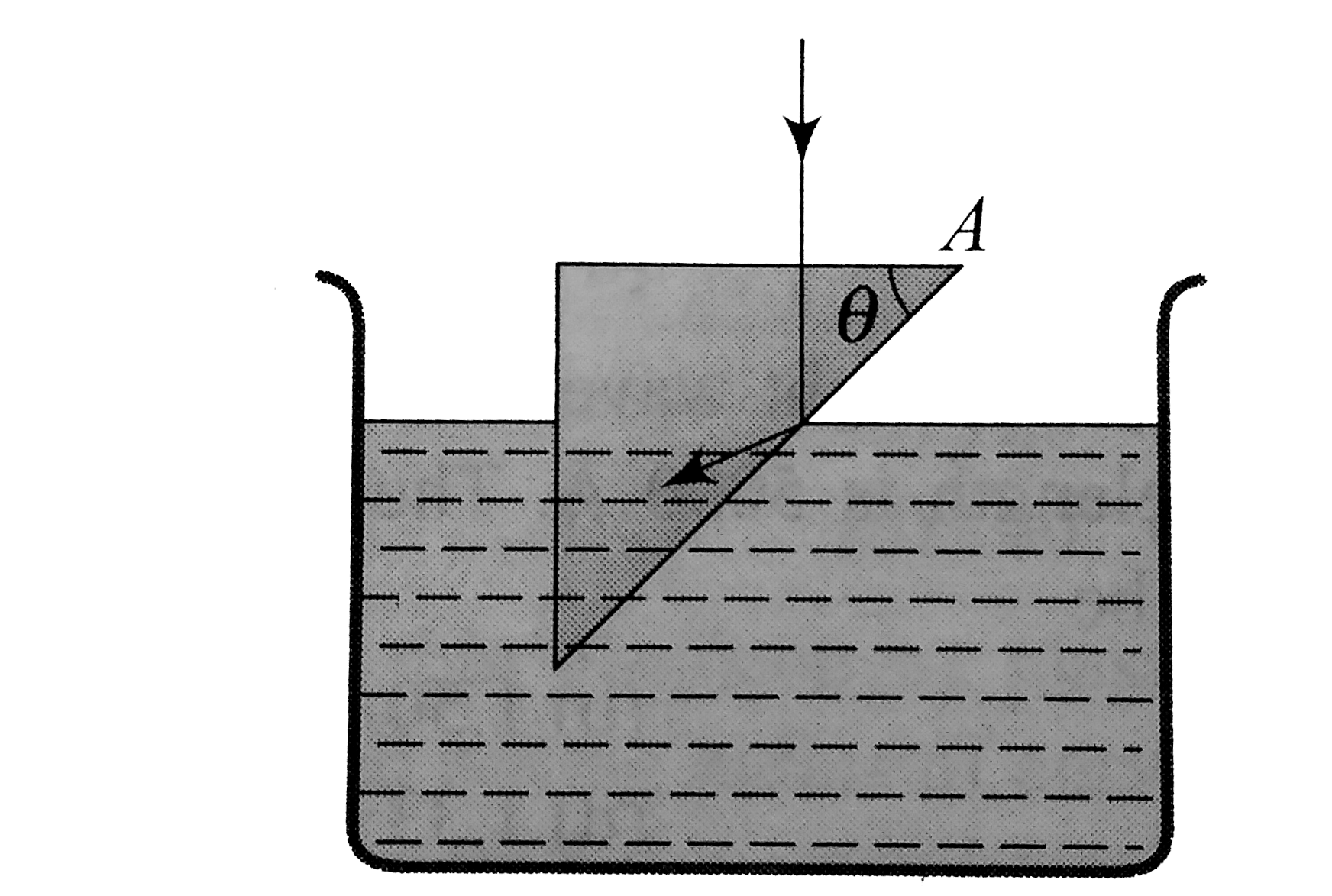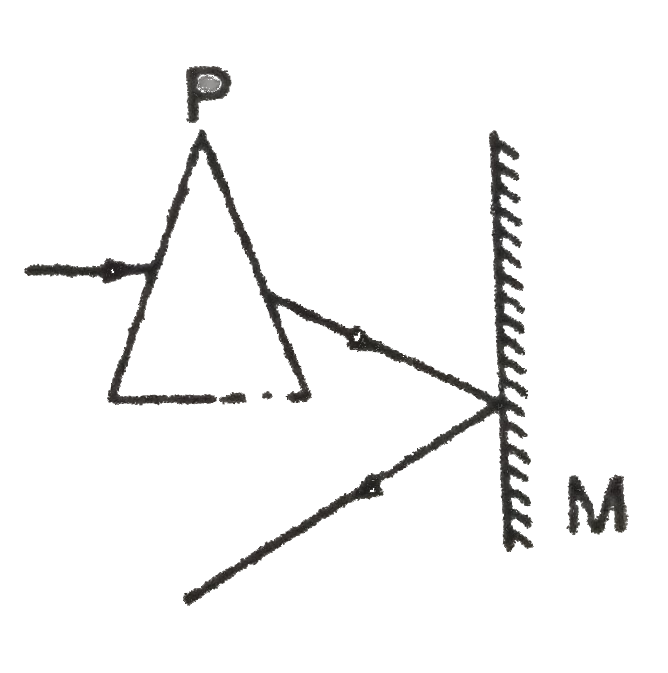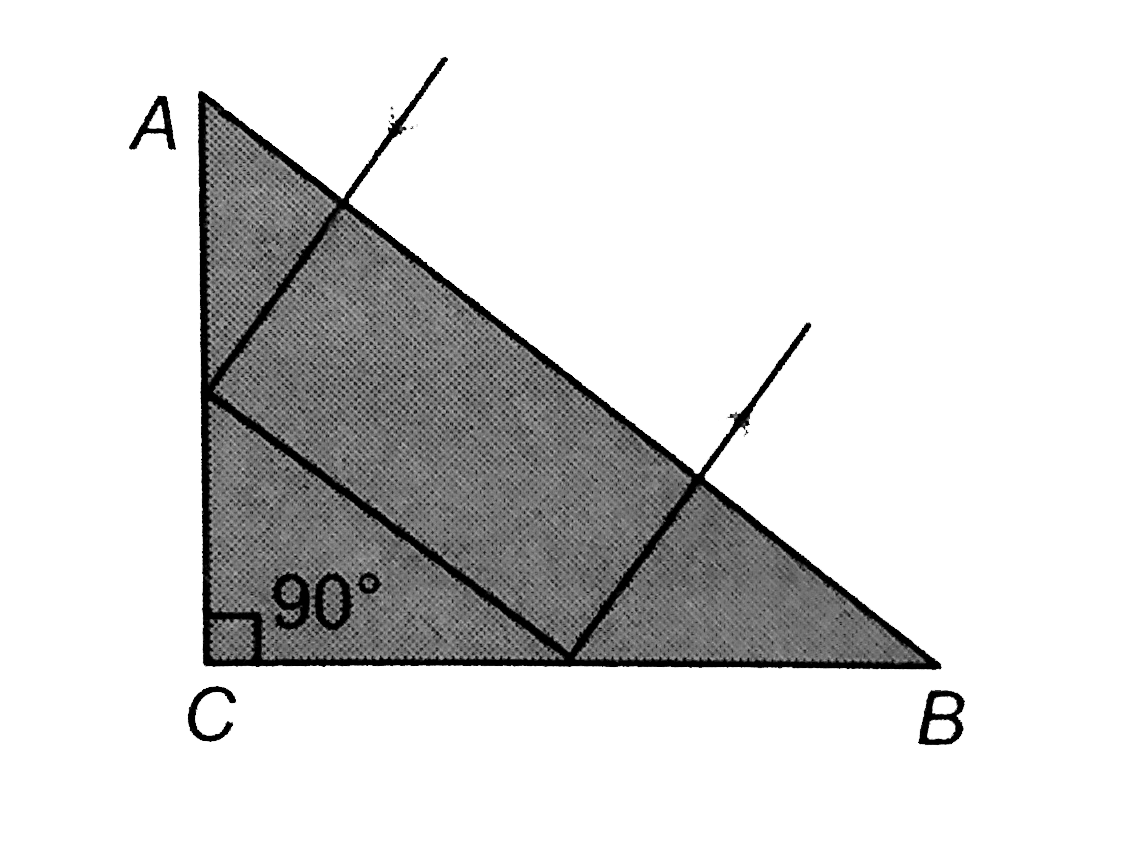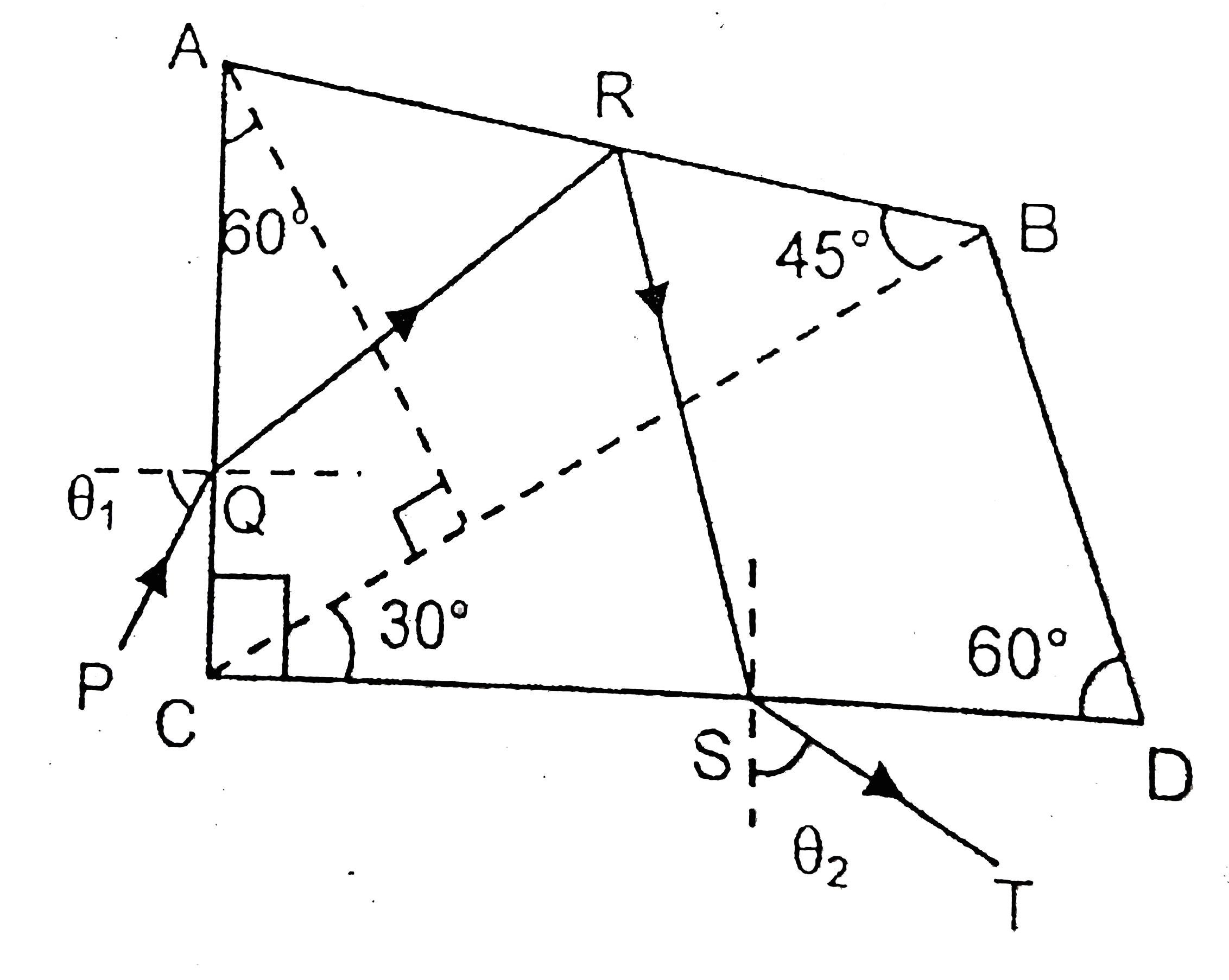Complete Solutions to DPP 1.5 of chapter RAY OPTICS of Class 12 book with complete answers and questions
| Class 12 | PHYSICS |
| Chapter | RAY OPTICS |
| CENGAGE PHYSICS DPP | DPP 1.5 |
| Number Of Questions | 13 |
| Academic Year | 2023-24 |
A ray of light is incident on the hypotenuse of a right-angled prism after travelling parallel to the base inside the prism. If `mu` is the refractive index of the material of the prism, the maximum value of the base angle for which light is totally reflected from the hypotenuse is
View SolutionThe refractive indices of the material of the prism and liquid are `1.56` and `1.32` respectively. What will be the value of `theta` for the following refraction?

View SolutionA prism having an apex angle of `4^@` and refractive index of 1.50 is located in front of a vertical plane mirror as shown in the figure. A horizontal ray of light is incident on the prism. The total angle through which the ray is deviated is:

View SolutionA light ray is incident by grazing one of the face of a prism and after refraction ray does not emerge out, what should be the angle of prism while critical angle is `C` ?
View SolutionThe light ray is incidence at angle of `60^(@)` on a prism of angle `45^(@)` . When the light ray falls on the other surface at `90^(@)` , the refractive index of the material of prism` mu` and the angle of deviation `delta` are given by
View SolutionA light ray is incident upon a prism in minimum deviation position and suffers a deviation of `34^(@)`. If the shaded half of the prism is knocked off, the ray will

View SolutionA ray of monochromatic light is incident on one refracting face of a prism of angle `75^(@)`. It passes thorugh the prism and is incident on the other face at the critical angle. If the refractive index of the material of the prism is `sqrt(2)`, the angle of incidence on the first face of the prism is
View SolutionThree glass prisms A , B and C of same refractive index are placed in contact with each other as shown in figure, with no air gap between the prisms. Monochromatic ray of light OP passes through the prism assembly and emerges as QR . The conditions of minimum deviation is satisfied in the prisms

View SolutionThe refractive index of material of a prism of angles `45^(@)`, `-45^(@)`, and `-90^(@)` is 1.5. The path of the ray of light incident normally on the hypotenuse side shown in
View SolutionThe angle of a prism is A. One of its refracting surfaces is silvered. Light rays falling at an angle of incidence 2A on the first returns back through the same path after sufferin reflection at the silvered surface. The refractive index `mu`, of the prism
View SolutionA ray of light incident normally on an isosceles right angled prism travels as shown in the figure. The least value of the refractive index of the prism must be

View SolutionWhen a ray of light is incident normally on one refracting surface of an equilateral prism (Refractive index of the material of the prism `=1.5`)
View Solution
The figure shows a constant deviation prism ABCD. The incident ray is PQ and the emergent ray is ST. Although it is made up of one piece of glass, but it is equivalent to two `30^(@)-60^(@)-90^(@)` prism and one `45^(@)-45^(@)90^(@)` prism.The angle `theta_(1)` is the angle of incidence on face AB. The path of the ray inside the prism is indicated in the figure. for this prism `mu=2sintheta_(1)`.
Q. The ratio `(theta_(1))/(theta_(2))` is
View Solution
DPP 1.5 questions and complete solutions for chapter RAY OPTICS of CENGAGE PHYSICS (ENGLISH) of Class 12